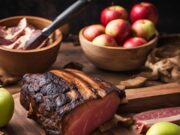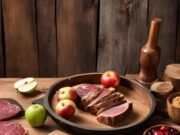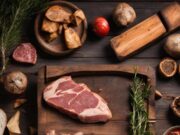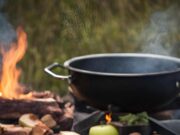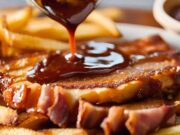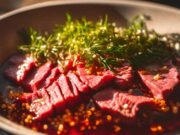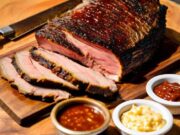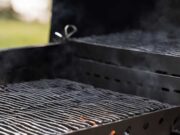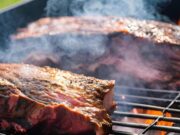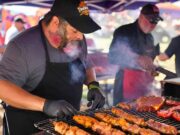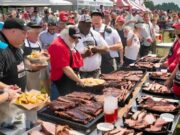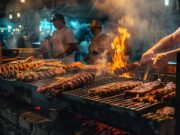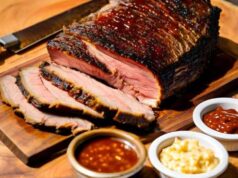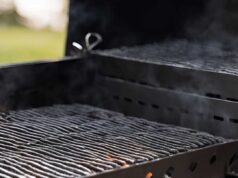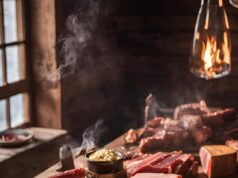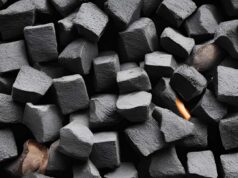- Key Takeaways:
- 1) Understanding Different Cuts of Meat
- 2) Essential Tools for Butchering
- 3) Proper Meat Storage Techniques
- 4) Trimming Your Meat for Optimal Cooking
- 5) The Importance of Meat Temperature
- 6) Seasoning: How to Enhance Flavor
- 7) Marinating vs. Dry Rub: What’s Best?
- 8) Cooking Techniques for Different Cuts
- 9) Resting Meat: Why It Matters
- 10) Safety Tips for Butchering and Barbecuing
- Frequently Asked Questions
Mastering the art of BBQ meat preparation can significantly elevate your grilling experience from ordinary to extraordinary.
Whether you are an experienced pitmaster or a weekend enthusiast, understanding the nuances of butchering is essential for achieving tender, flavorful cuts of meat.
Here are the top 10 butchering tips that will enhance your BBQ skills. From identifying the best cuts of meat to knowing the essential tools and safety practices, this guide will prepare you to impress family and friends at your next cookout.
Prepare to fire up your grill with confidence.
Key Takeaways:
- Understand the different cuts of meat to choose the right one for your BBQ.
- Use essential tools and proper storage techniques for successful butchering.
- Pay attention to meat temperature, seasoning, and cooking techniques for delicious BBQ results.
1) Understanding Different Cuts of Meat
Understanding different cuts of meat is essential for successful BBQ preparation, as each cut presents unique flavors and textures that can significantly enhance your grilling experience. From the tender ribeye and sirloin to the flavorful brisket and Boston butt, each type of meat has its ideal cooking method and seasoning profile.
For example, the ribeye, renowned for its marbling, becomes exceptionally juicy when grilled over high heat, allowing the fat to render perfectly. In contrast, brisket, with its rich connective tissue, benefits from low and slow cooking techniques such as smoking or braising, which break down the fibers and yield melt-in-your-mouth tenderness. The Boston butt, a favored choice for pulled pork, excels with a combination of dry rubs often incorporating paprika, garlic powder, and brown sugar. A long cook time at low temperatures brings out its natural sweetness.
When exploring these cuts, achieving the right balance of seasoning and cooking method can elevate your BBQ to extraordinary levels.
2) Essential Tools for Butchering
To achieve perfect BBQ meat preparation, having the right butchering tools is essential. These tools not only enhance the efficiency of the butchering process but also ensure optimal results during cooking. Key tools include a sharp knife, a cutting board, and a digital meat thermometer, which will allow you to monitor the internal temperature of meats while grilling.
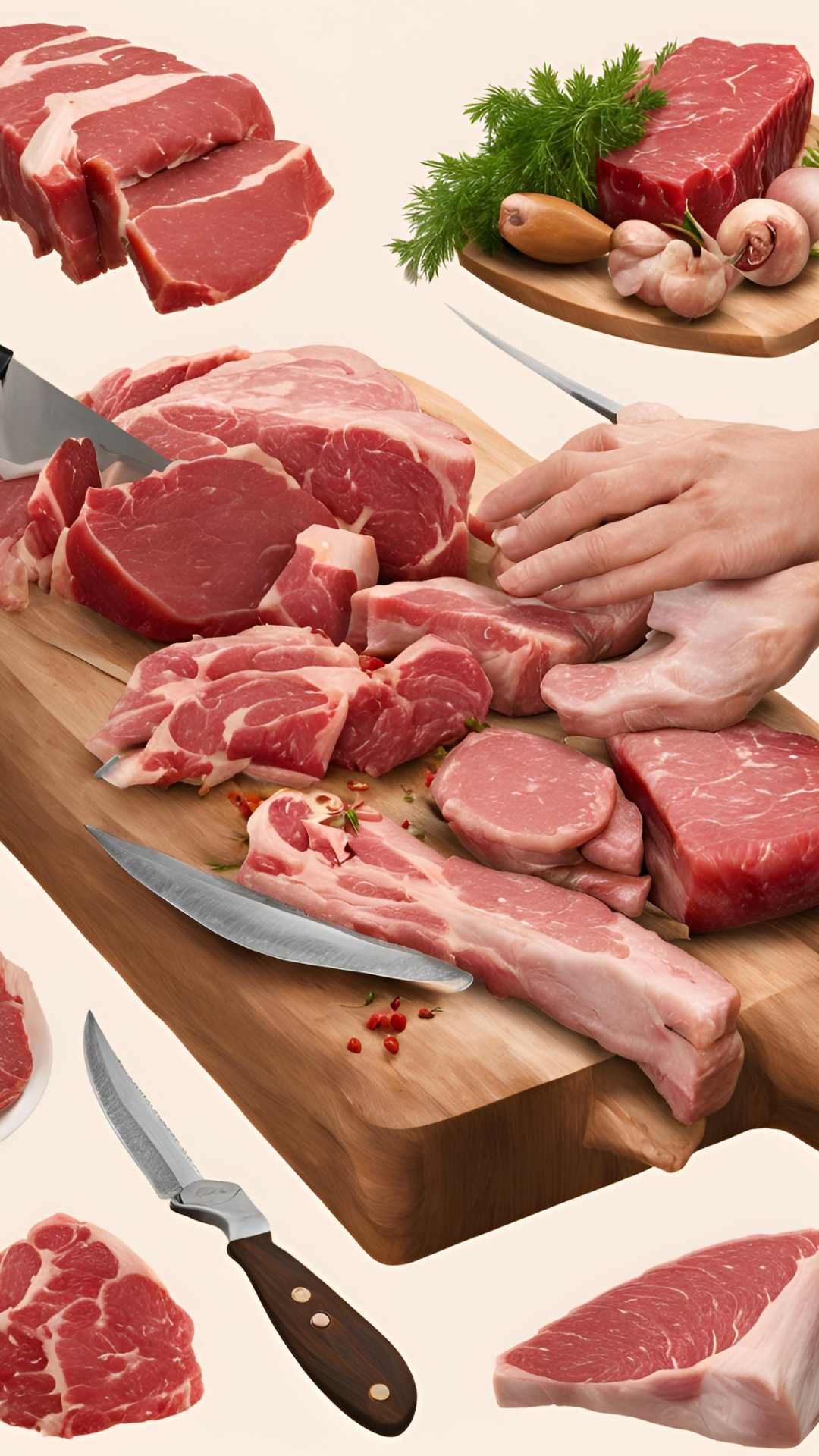
A high-quality chef’s knife, such as the Wüsthof Classic or Victorinox Swiss Army, is critical for making precise cuts, enabling better marinade absorption and a more even cook. A sturdy plastic or wooden cutting board provides a stable surface, minimizing the risk of accidents and enhancing your control when breaking down larger cuts.
Additionally, a digital meat thermometer, like the ThermoWorks Thermapen, is invaluable for ensuring that meats retain moisture and flavor by helping you avoid overcooking.
By utilizing these tools, you can master essential BBQ techniques and achieve mouthwatering results that are sure to impress your family and friends.
3) Proper Meat Storage Techniques
Proper meat storage techniques are crucial for maintaining quality and safety in BBQ meat preparation. Knowing how to store your cuts correctly can prevent spoilage and ensure freshness. It is important for you to refrigerate meats promptly and understand the best practices for thawing and marinating, as these factors can significantly affect the flavor and texture of your final product.
Refrigeration should be set to 40°F (4°C) or lower, as this temperature effectively slows down bacterial growth. For longer storage periods, freezing meat is an excellent option, with temperatures below 0°F (-18°C) preserving quality and safety by halting microbial activity.
When marinating, it is advisable to use a safe, covered container in the refrigerator rather than durable plastic or glass, as this helps to keep the meat flavorful while avoiding contamination.
Implementing these proper meat storage practices is essential for ensuring delicious, safe BBQ dishes that everyone can enjoy.
4) Trimming Your Meat for Optimal Cooking
Trimming your meat correctly is essential for optimal cooking. This technique enhances flavors and ensures even cooking throughout your cuts. By removing excess fat or sinew, particularly on cuts like brisket, you can achieve a more enjoyable texture and prevent flare-ups on the grill.
This practice not only improves the overall taste of the dish but also significantly impacts cooking time and temperature management. For instance, when preparing ribeye or pork shoulder, skillful trimming can reveal the meat’s marbling, which contributes to a richer flavor during the smoking or grilling process.
Techniques such as ‘Frenching’ lamb chops or removing the silverskin from tenderloins can elevate presentation, showcasing the quality of the meat. Each cut has unique requirements; understanding these nuances allows you to maximize the intended flavor profiles while ensuring that every bite of barbecued goodness is tender and succulent.
5) The Importance of Meat Temperature
Understanding the significance of meat temperature is crucial in the realm of BBQ. Utilizing a digital meat thermometer ensures that your meat is cooked to perfection, helping you avoid the pitfalls of undercooking or overcooking. Different types of meat have specific temperature guidelines, so being familiar with these standards will significantly enhance your BBQ experience.
For example, poultry must reach an internal temperature of 165°F to eliminate any harmful bacteria, while ground meats such as beef or pork should achieve a minimum of 160°F. Steaks and roasts allow for a bit more flexibility, ideally reaching 145°F for medium-rare.
Monitoring these temperatures not only helps prevent foodborne illnesses but also enhances the flavor and juiciness of the meat, delivering the BBQ satisfaction you desire.
By using a reliable meat thermometer, you can consistently achieve these benchmark temperatures, resulting in perfectly cooked and delectable dishes every time.
6) Seasoning: How to Enhance Flavor
Seasoning is a crucial step in BBQ meat preparation, as it significantly enhances flavor and creates a delicious crust on the outside of the meat. Whether you opt for a dry rub or a marinade, understanding how to apply seasonings effectively can elevate your BBQ dishes to a new level.
There are numerous techniques for seasoning that can profoundly impact the taste of various cuts. For example, a robust dry rub made with spices like smoked paprika and brown sugar is ideal for infusing flavor into a pork shoulder. Conversely, a tangy marinade featuring citrus and herbs can work wonders for chicken, tenderizing the meat while adding refreshing notes. If you’re looking for more expert tips on perfect BBQ meat preparation, check out this article on Top 10 Butchering Tips for Perfect BBQ Meat Preparation straight from a meat scientist.
Experimenting with unique combinations not only brings out the best in each cut but also allows you to explore diverse flavor profiles, whether you are aiming for a sweet and smoky BBQ or a spicy, tangy experience.
7) Marinating vs. Dry Rub: What’s Best?
When preparing BBQ meat, understanding the differences between marinating and using a dry rub is essential for achieving the desired flavor and tenderness. Marinating not only adds moisture but also tenderizes tougher cuts, while dry rubs create a flavorful crust that enhances the meat’s natural taste.
Each technique offers unique benefits, making them suitable for different types of meat. For instance, marinating is particularly effective for lean cuts such as chicken or pork, as the marinade can penetrate deeply, infusing flavors and helping to break down proteins for a tender finish. In contrast, dry rubs are ideal for heartier meats like beef brisket or ribs, where the spices form a delicious bark that seals in moisture and provides a satisfying crunch.
Ultimately, the method you choose can significantly influence the final flavor profile, allowing for creative exploration in your BBQ preparations.
8) Cooking Techniques for Different Cuts
Different cuts of meat require specific cooking techniques to achieve optimal results on the grill, and understanding these methods is essential for any BBQ enthusiast. For example, utilizing the Texas Crutch for brisket helps retain moisture, while the cooking methods for gas BBQ and charcoal BBQ can differ significantly.
Indirect grilling is particularly effective for larger cuts, such as pork shoulders or ribs, as it allows for a slow, even cook without exposing the meat to direct heat. Smokers, whether electric or traditional, are excellent at infusing rich flavors into meat during extended cooking sessions, making them ideal for tougher cuts that require tenderization.
Additionally, braising can be transformative for tougher meats like chuck roast, where the combination of dry and moist heat results in melting tenderness. It is also crucial to have the right tools, such as a quality smoker or grill, to experiment with these techniques and fully appreciate the versatility of different meat cuts.
9) Resting Meat: Why It Matters
Resting meat after cooking is a crucial step that is often overlooked, yet it plays a significant role in ensuring juicy and tender barbecue. Allowing the meat to rest enables the juices to redistribute throughout the cut, resulting in a more flavorful and moist eating experience.
This process occurs because the muscle fibers, which constrict during cooking and force moisture towards the surface, have a chance to relax. As the meat sits, these fibers can reabsorb the lost juices, enhancing both texture and flavor.
For optimal results, thicker cuts such as roasts should rest for about 15 to 30 minutes, while smaller cuts, like chicken breasts or steaks, typically require only 5 to 10 minutes. Understanding these resting times not only improves the overall quality of your dish but also significantly elevates the dining experience.
10) Safety Tips for Butchering and Barbecuing
Safety tips are essential in both butchering and barbecuing to prevent foodborne illnesses and create a safe cooking environment. Understanding best practices allows you to enjoy your BBQ with confidence.
From proper sanitation to safe meat handling techniques, adhering to food safety guidelines is crucial.
By implementing thoughtful measures, you can prevent cross-contamination and maintain the quality of the meat you prepare for grilling. It is important to use separate cutting boards for meats and other food items, ensuring that utensils and surfaces are thoroughly sanitized after coming into contact with raw products.
Paying close attention to cooking temperatures is vital; using a meat thermometer is an effective way to ensure that the internal temperature reaches safe levels. For ground meats, this typically means cooking to at least 160°F, while poultry should reach 165°F to effectively eliminate pathogens.
Being mindful of these practices not only enhances the flavor and quality of your meal but also protects your loved ones from potential health risks.
Frequently Asked Questions
What are the top 10 butchering tips for perfect BBQ meat preparation?
1. Start with a sharp knife to ensure clean and precise cuts.
2. Use a meat thermometer to ensure proper cooking temperatures and avoid undercooked or overcooked meat.
3. Familiarize yourself with different cuts of meat and their ideal cooking methods.
4. Trim off any excess fat or gristle to prevent flare-ups and ensure even cooking.
5. Let the meat rest for a few minutes after cooking to allow the juices to redistribute, resulting in a juicier and more flavorful final product.
6. Follow proper food safety guidelines, including cleaning and sanitizing all surfaces and tools used for butchering and cooking.
7. Keep your work area organized and free of clutter to avoid cross-contamination.
8. Take your time and use steady, even pressure when cutting or slicing to avoid uneven or jagged edges.
9. Experiment with different marinades, rubs, and seasoning blends to enhance the flavor of your meat.
10. Practice, practice, practice! The more you butcher and cook meat, the better you will become at it.



